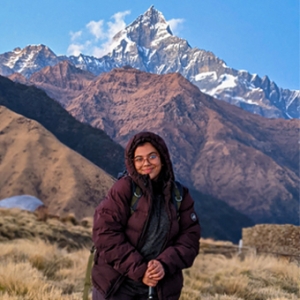Introduction to Kilimanjaro Climbing
Mount Kilimanjaro, the highest peak in Africa, stands at an impressive 5,895 meters (19,341 feet) above sea level. Known as the "Roof of Africa," this dormant volcano is one of the most popular climbing destinations in the world. Located in Tanzania, near the border with Kenya, Kilimanjaro offers a unique climbing experience due to its diverse ecosystems, stunning landscapes, and the sense of achievement that comes with reaching its summit, Uhuru Peak. Also, you can read our blog "Where is Kilimanjaro" for a detailed overview of Kilimanjaro's Location.
The mountain comprises three volcanic cones: Kibo, Mawenzi, and Shira. While Kibo is the highest and where the summit is located, Mawenzi and Shira are extinct. Climbing Kilimanjaro does not require technical mountaineering skills, making it accessible to trekkers and adventure enthusiasts of various experience levels. However, the climb is still challenging due to its high altitude and changing weather conditions.
This Kilimanjaro Climbing Guidebook aims to provide you with all the essential information needed to plan, prepare, and successfully conquer this iconic mountain. Whether you are a seasoned climber or a first-time trekker, you'll find valuable insights to help you make the most of your Kilimanjaro adventure.
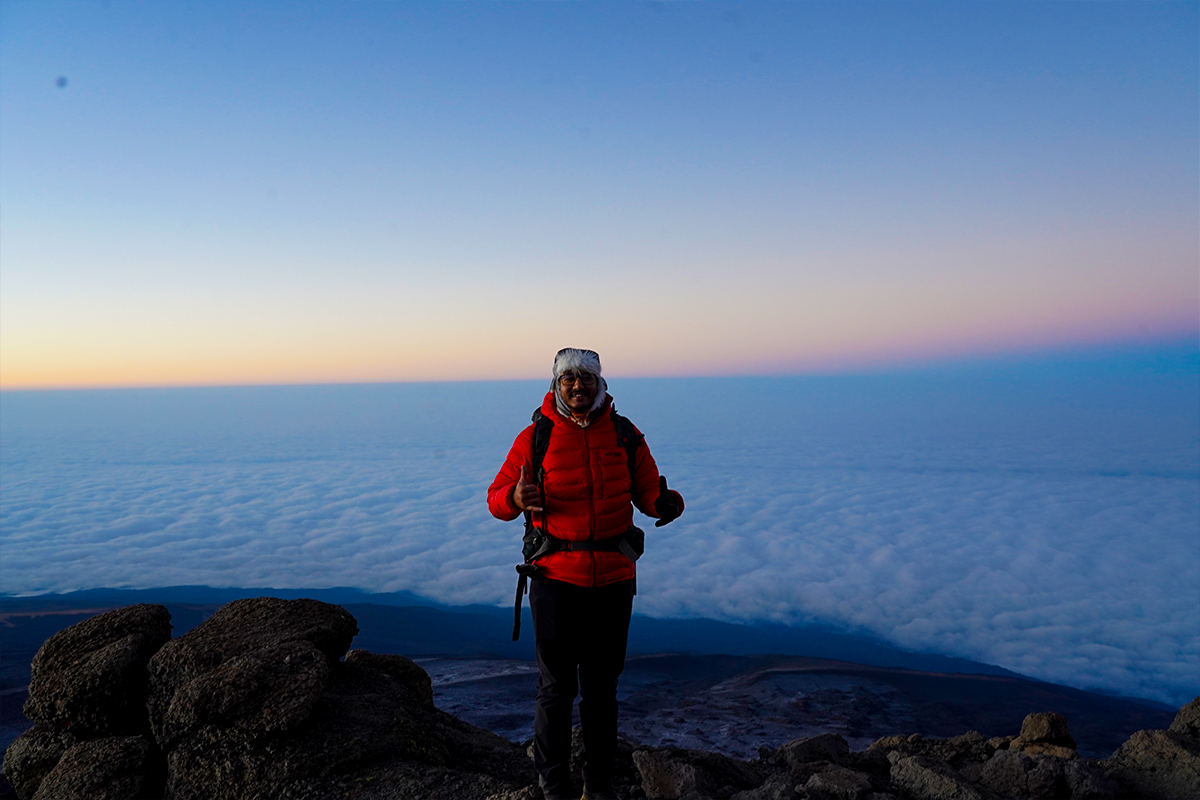
Highlights of Kilimanjaro Climbing
Climbing Kilimanjaro is not just about reaching the summit; it's about experiencing the journey through various climatic zones and breathtaking sceneries. Here are some of the major highlights of Kilimanjaro Climbing to look forward to:
- From lush rainforests to arid alpine deserts and the icy summit, Kilimanjaro's routes take you through five distinct climatic zones.
- Choose from several routes, each offering unique views and experiences. The Popular Kilimanjaro routes include the Machame, Marangu, Lemosho, and Rongai routes.
- Reaching Uhuru Peak at dawn provides a stunning sunrise view over the African plains, a truly unforgettable experience.
- The lower slopes of Kilimanjaro are home to diverse wildlife, including monkeys, antelopes, and various bird species.
- Learn about the local Chagga culture and traditions as you interact with the porters and guides who accompany you on your climb.
How long does it take to climb Mount Kilimanjaro?
The duration of a Kilimanjaro climb varies depending on the chosen route and your acclimatization schedule. On average, it takes between 5 to 9 days to reach the summit and descend. Here’s a breakdown of the duration for popular climbing routes of Kilimanjaro:
- Marangu Route: Often called the "Coca-Cola" route, this is the shortest and most popular route, typically completed in 5 to 6 days.
- Machame Route: Known for its scenic beauty, the Machame route takes about 6 to 7 days.
- Lemosho Route: This route is longer and more gradual, taking 7 to 8 days, making it ideal for acclimatization.
- Rongai Route: Approaching from the north, the Rongai route takes around 6 to 7 days.
- Northern Circuit Route: The longest route, taking about 9 days, offering excellent acclimatization and fewer crowds.
Factors such as weather conditions, individual fitness levels, acclimatization progress with proper guidance and “pre-climbing training and preparation" can influence the duration of your climb. A longer itinerary increases your chances of successfully reaching the summit by allowing more time for acclimatization.
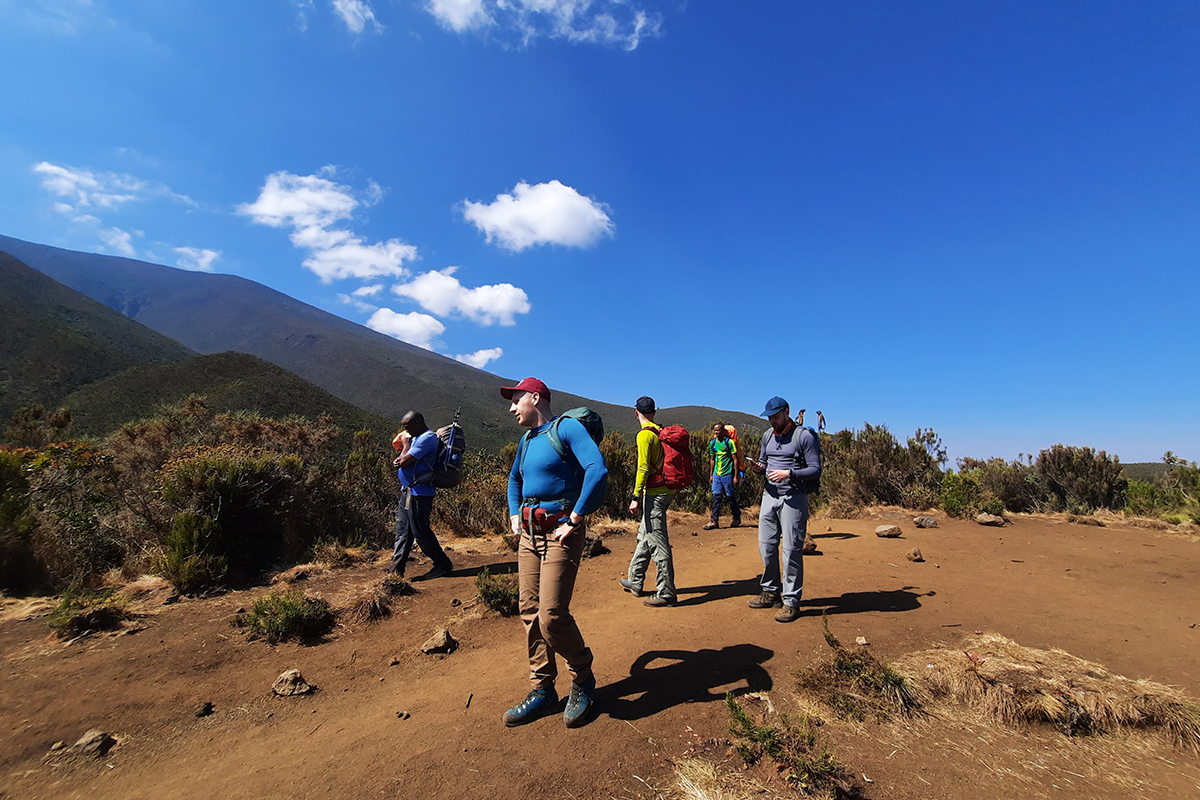
How to reach Kilimanjaro?
- Kilimanjaro International Airport (JRO) is the most recommended option due to its proximity and convenient transportation options to Moshi and Arusha.
- Arusha Airport (ARK) is closer to Kilimanjaro than other major hubs but less serviced compared to JRO.
- Other Major Hubs (Nairobi, Mombasa, Dar es Salaam) require additional domestic flights or overland transport, making them less ideal for a direct journey to Kilimanjaro.
By prioritizing flights to Kilimanjaro International Airport (JRO), you can ensure a smoother and quicker start to your Kilimanjaro adventure.
- Moshi, Tanzania – 41km
- Arusha, Tanzania – 51km
- Nairobi, Kenya– 310 km
- Mombasa, Kenya – 350 km
- Dar es Salaam, Tanzania – 589 km
Popular Itinerary for Kilimanjaro Climb
One of the most popular and successful itineraries for climbing Kilimanjaro are the Machame, Marangu and Lemosho Route. It's known for its scenic beauty, varied landscapes, and high success rates. Here's a typical itinerary for the Machame Route:
Day 1: Arrival in Kilimanjaro & Drive to Moshi
Day 2: Machame Gate to Machame Camp
Day 3: Hike from Machame Camp to Shira Camp
Day 4: Hike from Shira Camp to Lava Tower to Barranco Camp
Day 5: Hike from Barranco Camp to Karanga Camp
Day 6: Guide Hike from Karanga Camp to Barafu Camp
Day 7: Barafu Camp to Kilimanjaro Summit and back to Mweka Hut
Day 8: Hike from Mweka Camp to Moshi
Day 9: Departure Day
Explore all the Kilimanjaro Climbing Routes,here.
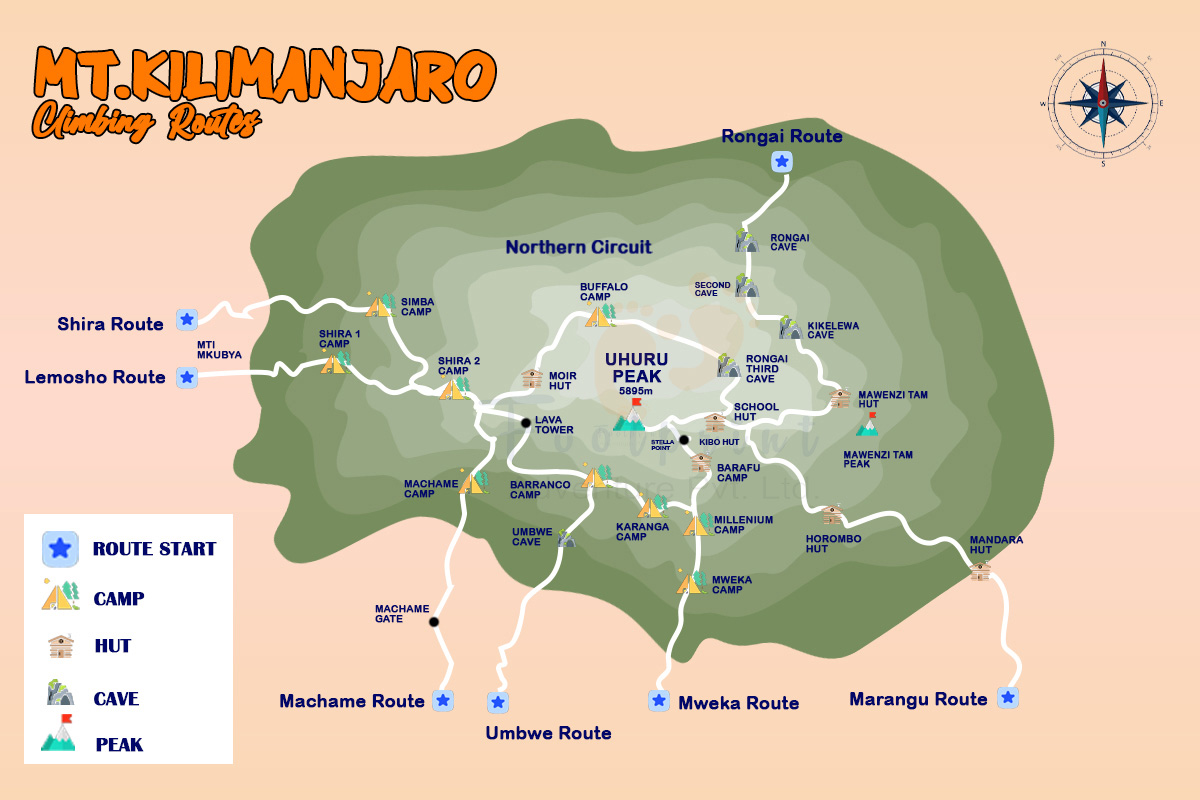
Difficulty Level and Physical Fitness Requirement for Climbing Kilimanjaro
Climbing Mount Kilimanjaro is a physically demanding adventure that requires physical fitness, mental resilience, and thorough preparation. While it doesn’t require technical mountaineering skills, the altitude and varying terrain make it a challenging climb.
Different Kilimanjaro Climbing Routes offer varying levels of difficulty. The Marangu Route, often considered the easiest due to its gradual slope and hut accommodations, has the lowest success rate because climbers tend to underestimate the need for acclimatization. Learn more about Difficulty level of Kilimankaro Climbing,here.
On the other hand, the Machame Route, known for its "climb high, sleep low" strategy, involves steeper sections but has a higher success rate due to better acclimatization opportunities. The Lemosho Route, offering a longer and more gradual ascent, is ideal for acclimatization, while the Rongai Route, approaching from the north, is less steep and drier, making it easier for some. The Northern Circuit Route, the longest, offers the best acclimatization profile but requires more time and stamina.

To successfully climb Kilimanjaro, you should:
- Focus on building cardiovascular endurance, strength, and flexibility.
- Engage in aerobic activities like hiking, running, cycling, and swimming at least 3-4 times per week, gradually increasing intensity and duration.
- Strength training is crucial, with a focus on the legs, core, and upper body through exercises like squats, lunges, deadlifts, planks, and push-ups.
- Regular hikes with a weighted backpack prepare your body for long days on the trail.
- Incorporate yoga and stretching exercises to improve flexibility and balance, reducing the risk of injuries.
- If possible, train at higher altitudes to help your body acclimatize, or use an altitude training mask.
- Mental preparation is equally important, as the climb can be mentally challenging due to prolonged effort, changing weather, and altitude effects. Developing a positive mindset, resilience, and determination will significantly enhance your chances of success.
Explore the 12 week Training guide for Kilimanjaro Climbing,here.

How much does it cost to Climb Kilimanjaro?
The cost to climb Kilimanjaro ranges from $2,500 to over $7,000, depending on several factors. Climbing Kilimanjaro on a Budget typically costs between $2,000 and $2,800, mid-range climbs between $2,900 and $4,000, and luxury climbs can go from $4,000 to $7,000 or more.
The route and duration significantly influence the cost, with longer and more scenic routes like Lemosho and Northern Circuit being more expensive due to additional days. The different park fees and campaign fees on the mountain can cause the reason for higher logistical costs.
The level of service also impacts the cost, as budget options may cut corners on safety and equipment, potentially compromising the overall experience. In contrast, mid-range and luxury options offer better support, safety measures, and higher-quality gear, ensuring a more comfortable and safer climb.
Best Season/ Time to Climb Kilimanjaro
The best time to climb Kilimanjaro largely depends on weather conditions and your personal preferences. However, there are two primary trekking seasons:
- Dry Season (June to October): This is considered the best time to climb Kilimanjaro. The weather is generally dry and clear, with sunny days and cold nights. The skies are usually clear, offering excellent visibility, and there's less chance of encountering rainfall. This period coincides with the Northern Hemisphere summer, making it a popular time for trekkers. However, be prepared for colder temperatures, especially at higher altitudes.
- Short Rainy Season (November to December): This season sees occasional rainfall, especially in the afternoons and evenings. While it's still possible to climb Kilimanjaro during this time, trekkers should be prepared for wetter conditions and less predictable weather. The advantage of trekking during this season is fewer crowds on the mountain.
- Popular full moon climb in Kilimanjaro: One of the best times to climb Kilimanjaro is during the full moon. The natural moonlight illuminates the path, reducing the need for headlamps and enhancing the stunning scenery. This increased visibility improves safety by helping climbers navigate the terrain more easily, especially during the final night time ascent. The full moon climb also fosters a sense of camaraderie among trekkers, making the journey more enjoyable. Due to its popularity, it's advisable to book in advance. Many trekking companies offer special packages for full moon climbs, providing an extraordinary and memorable adventure.
It's generally recommended to avoid climbing during the long rainy season (March to May) due to heavy rainfall, muddy trails, and reduced visibility. Additionally, climbing during the rainy season poses higher risks of altitude-related illnesses and hypothermia.
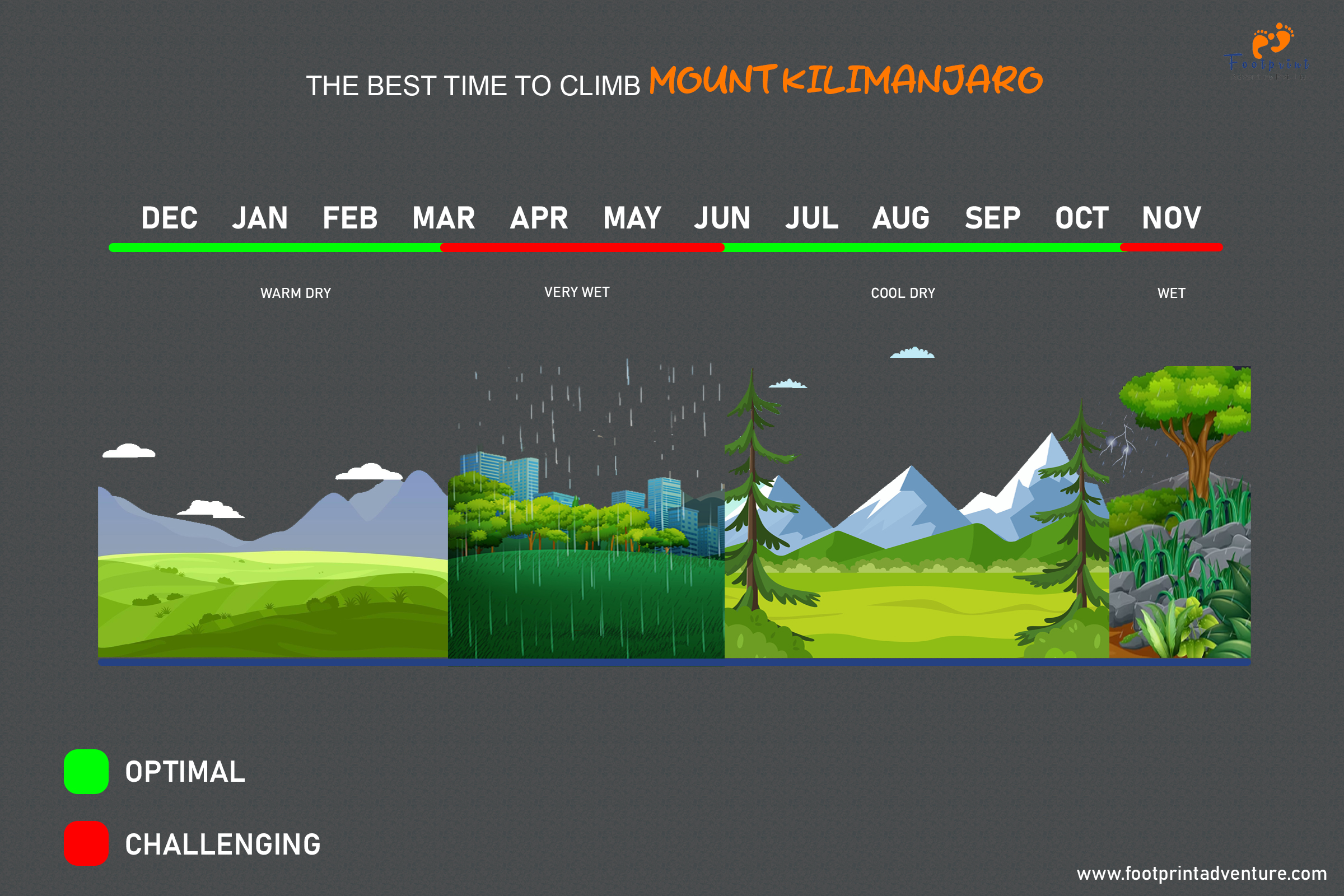
For detailed information, check out our blog on Best Time for Kilimanjaro Climb.

How cold is the summit of Mount Kilimanjaro?
The summit of Mount Kilimanjaro, known as Uhuru Peak, can be extremely cold, especially during the night and early morning hours when temperatures drop significantly. At an elevation of 5,895 meters (19,341 feet), the summit experiences freezing temperatures year-round.
On average, temperatures at the summit can range from -7°C to -29°C (20°F to -20°F), depending on the time of year and weather conditions. However, the wind chill factor can make it feel even colder, particularly during the final ascent to the summit.
Climbers must be prepared for these cold temperatures by layering appropriately with insulated clothing, including a down jacket, thermal base layers, fleece or softshell jackets, warm hats, gloves, and insulated pants. Additionally, having a quality sleeping bag rated for subzero temperatures is essential for staying warm at high-altitude campsites.
Accommodation Options during Kilimanjaro Climb
When planning a climb up Mount Kilimanjaro, understanding the accommodation options available during the trek is crucial for a comfortable and successful experience. Here are the main types of accommodations climbers can expect:
Mountain Huts
Marangu Route also known as the "Coca-Cola" route, is the only route that offers hut accommodation throughout the climb. These basic wooden huts provide a more sheltered experience compared to tents. Each hut has dormitory-style bunk beds, communal dining areas, and simple washrooms. While they offer more protection from the elements, they can be crowded during peak climbing seasons.
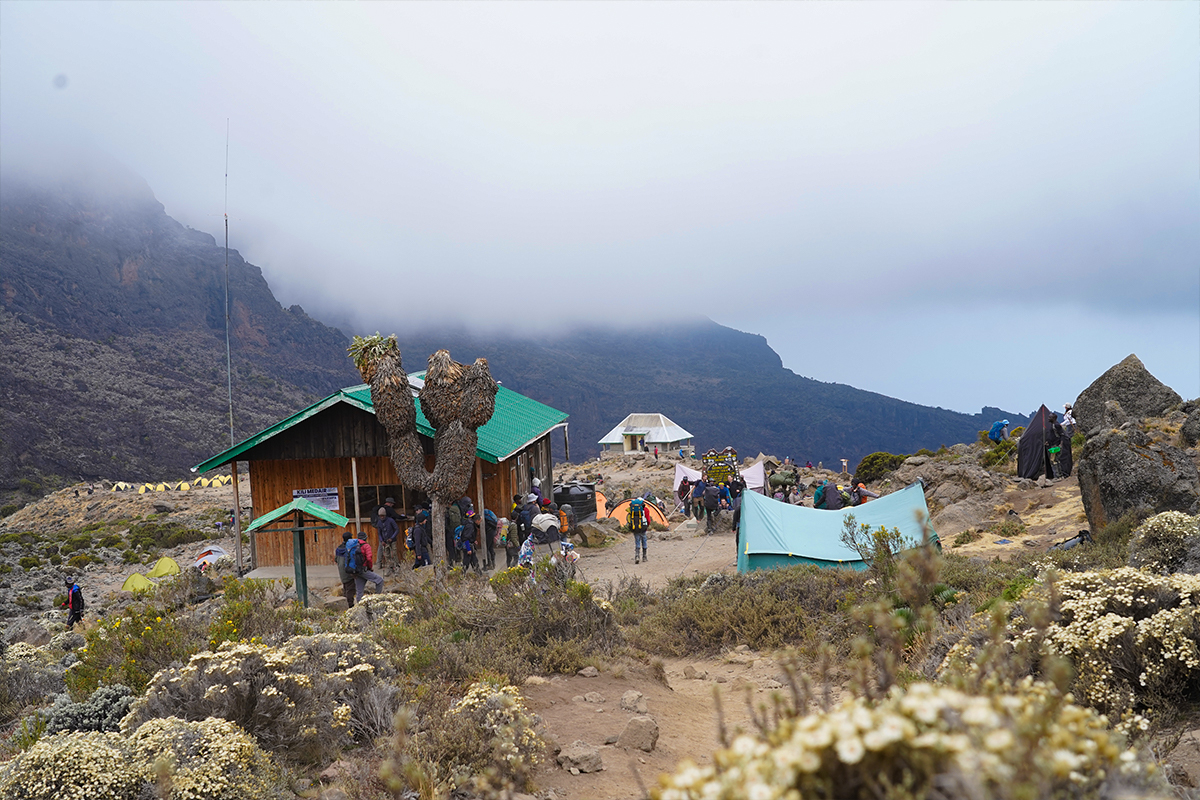
Camping
Machame, Lemosho, Rongai, and Other Routes: For most other routes, climbers will be camping in tents provided by their tour operators. These tents are typically set up and taken down by the support crew. Quality and comfort can vary, but reputable operators like Footprint Adventure provide high-quality, weather-resistant tents and provide foam sleeping mats or inflatable sleeping pads. Meals are often served in a communal dining tent, and portable toilets may be available for an extra fee.
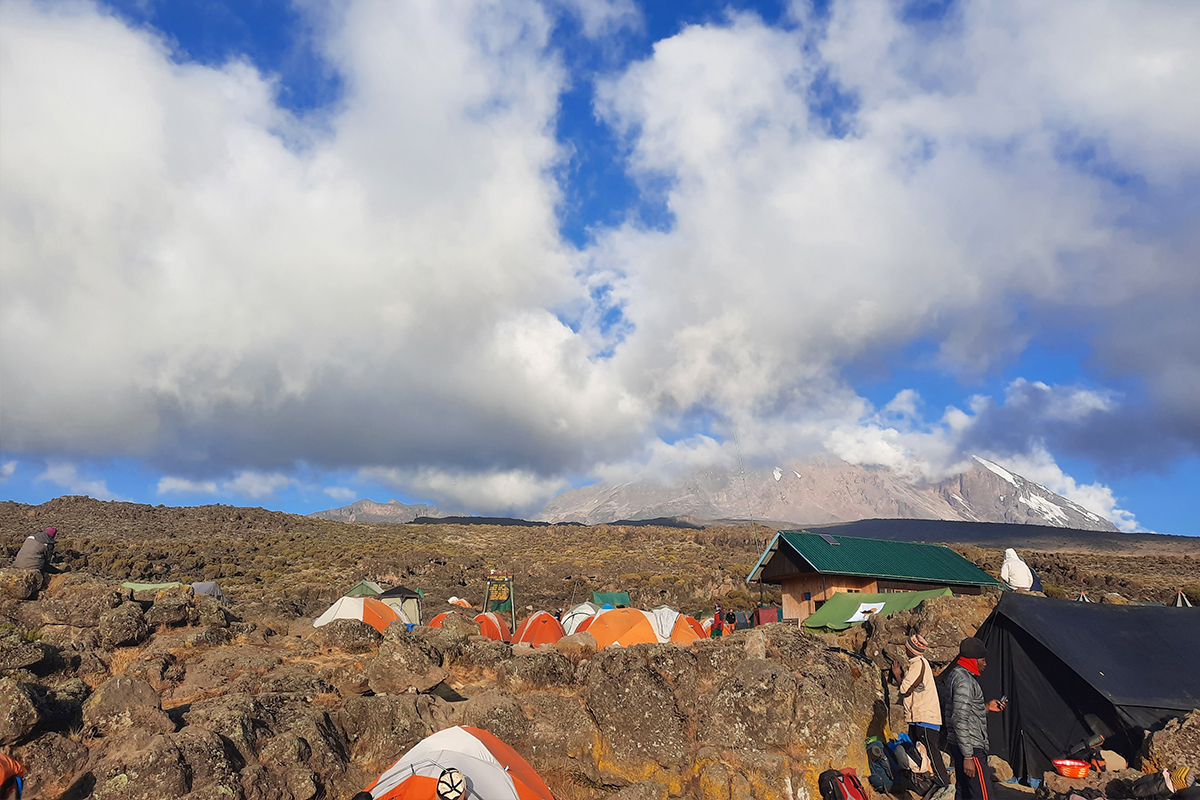
Pre- and Post-Climb Accommodation
- Hotels and Lodges: Before and after the climb, most climbers stay in hotels or lodges in Moshi or Arusha. These accommodations range from budget to luxury and offer a chance to rest and acclimate before the trek, and to recuperate after the descent. Many tour operators include a night or two at these hotels in their packages. Services such as airport transfers, gear storage, and equipment rental are often available at these establishments. We recommend mid-range hotels in Moshi like; Panama Garden Resort and Brubru Lodge.
Facilities of Toilets during the Kilimanjaro climbing
During Kilimanjaro climbing, toilet facilities vary depending on the route and the level of service provided by your trekking company. Here are the typical options:
- Public Toilets: On popular routes, there are public toilet facilities available at most campsites. These are usually basic pit latrines and may not be very clean due to heavy use.
- Portable Toilets: Many trekking agencies like Footprint Adventure offer portable toilet tents as part of our service. These are small, private, chemical toilets that are set up at each campsite by the support team. These portable toilets provide more comfort and cleanliness compared to public toilets.
- Nature: In more remote areas or less frequented routes, if facilities are not available, you may need to use natural options, which is less common but sometimes necessary.
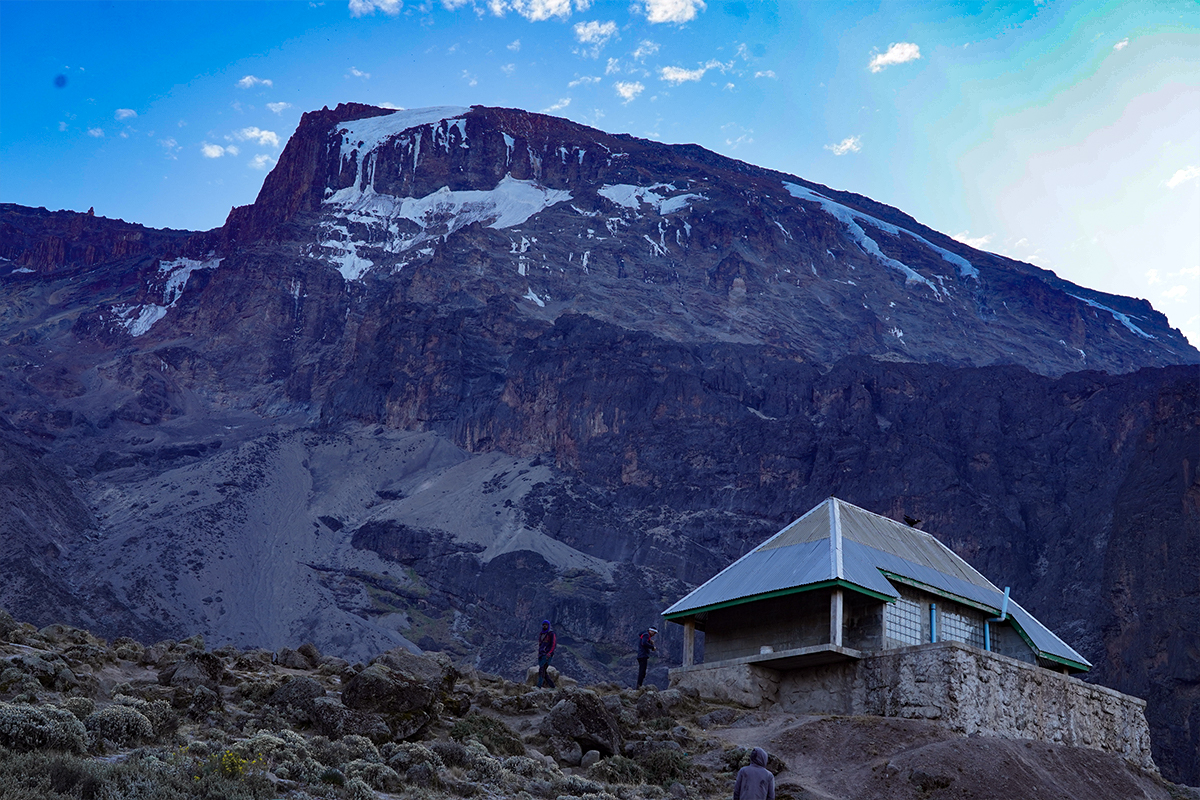
What is the highest elevation you reach during the Kilimanjaro Climb?
The highest point you will reach during the Kilimanjaro climb is Uhuru Peak, which stands at an impressive 5,895 meters (19,341 feet) above sea level. This is the summit of Mount Kilimanjaro and the highest point in the whole African continent.
Reaching this elevation is a significant achievement, but it comes with challenges, primarily due to the effects of high altitude. Climbers often experience symptoms of altitude sickness, such as headaches, nausea, and fatigue, as they ascend above 3,000 meters (9,843 feet).
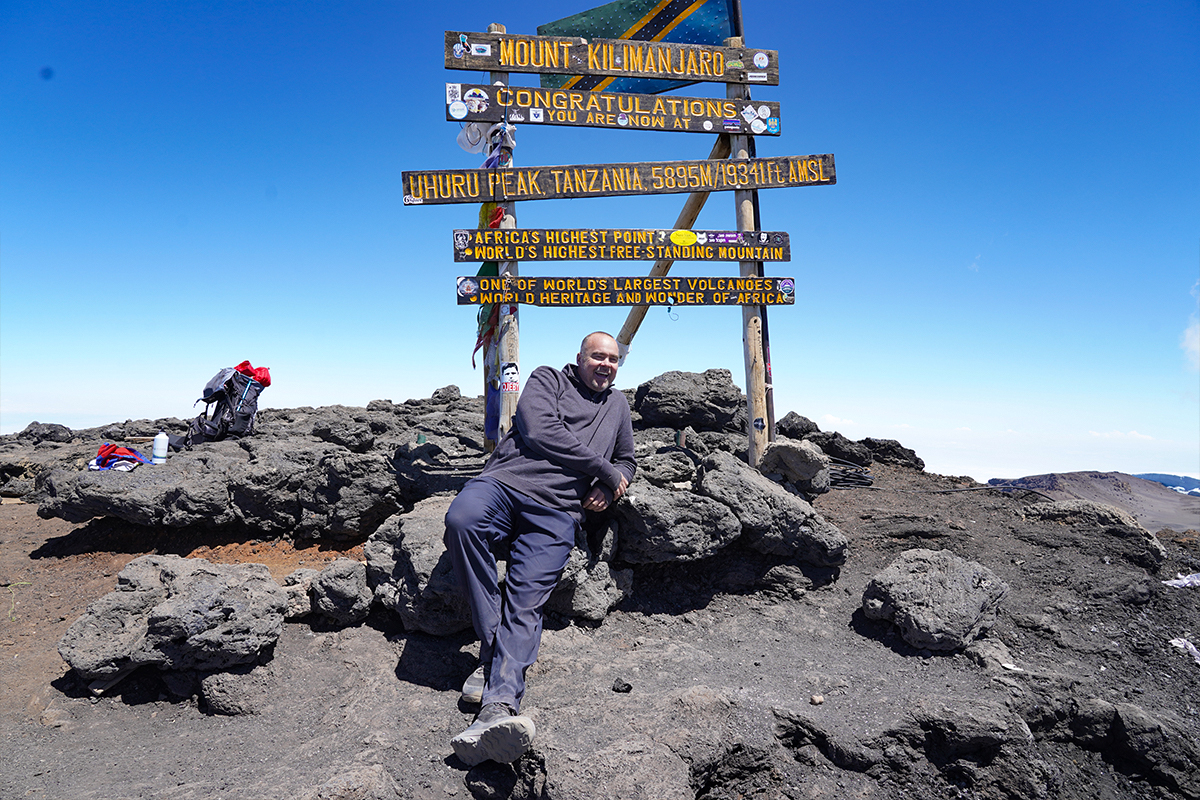
Acclimatization is crucial, and most routes incorporate a “climb high, sleep low” strategy to help your body adjust to the lower oxygen levels. The final push to the summit typically begins around midnight, allowing climbers to reach Uhuru Peak at sunrise, which provides a stunning view and a memorable conclusion to the climb. The air is thin, and temperatures are extremely cold at this elevation, so climbers must be well-prepared with appropriate clothing and gear to handle the harsh conditions.
Is Travel Insurance Important for Climbing Kilimanjaro?
Yes, obtaining travel insurance is highly recommended for climbing Kilimanjaro. Given the physical demands and potential risks associated with high-altitude trekking, having comprehensive travel insurance can provide peace of mind and financial protection.
Key aspects to look for in a travel insurance policy include coverage for high-altitude trekking (up to 6,000 meters), emergency medical expenses, evacuation and repatriation, trip cancellation or interruption, and lost or stolen baggage. Some policies also cover trip delays and additional accommodations if needed.
In case of high-altitude sickness or other medical emergencies, helicopter evacuation might be necessary, and this can be extremely costly without insurance. Make sure to read the policy details carefully and understand the exclusions and requirements. It’s also wise to carry a copy of your insurance policy and emergency contact information with you during the climb. Get more information about Travel Insurance, here.
Can I climb Kilimanjaro alone?
No, Climbing Kilimanjaro Alone is not recommended or allowed by Kilimanjaro National Park regulations. All climbers are required to be accompanied by licensed guides and support staff, including porters and cooks. This regulation is in place to ensure safety, as the guides are experienced in handling altitude-related issues, navigating the routes, and providing first aid if necessary. Additionally, the support guide and porters help carry gear and supplies, set up camps, and prepare meals, making the climb more manageable and allowing climbers to focus on the trek.

Acute Mountain Sickness and Its Prevention
AMS occurs when your body can't adjust to high altitudes quickly enough, resulting in symptoms due to lower oxygen levels. It can affect anyone, regardless of fitness level or previous high-altitude experience.
Common Symptoms of AMS
- Headache (both sides or one side of the head)
- Loss of appetite
- Nausea and vomiting
- Tiredness and dizziness
- Discomfort while sleeping
- Increased heart rate and shortness of breath
Preventive Measures for AMS
- Acclimatization: Choose routes that allow gradual ascent and proper acclimatization. Slow, steady climbs are safer.
- Hydration and Nutrition: Drink 4-5 liters of water daily and maintain a balanced diet rich in carbohydrates.
- Rest: Take plenty of rest after daily hikes to allow your body to adjust.
- Warm Clothing: Dress warmly to avoid hypothermia, which can exacerbate AMS symptoms.
- Medication: Consult a doctor about medications like Diamox (Acetazolamide) to prevent AMS.
- Descent: If symptoms persist, descend to a lower altitude immediately.
- Guides and Local Agencies: Trek with experienced guides who can help manage AMS and provide necessary support.
These preventive measures are essential for a safe and enjoyable Kilimanjaro climb. The breathtaking views of snowy mountains, valleys, and glacial scenery are well worth the effort, but preparation and caution are key to a successful trek. Findout more about Acute Mountain Sicknes and its Prevention,here.
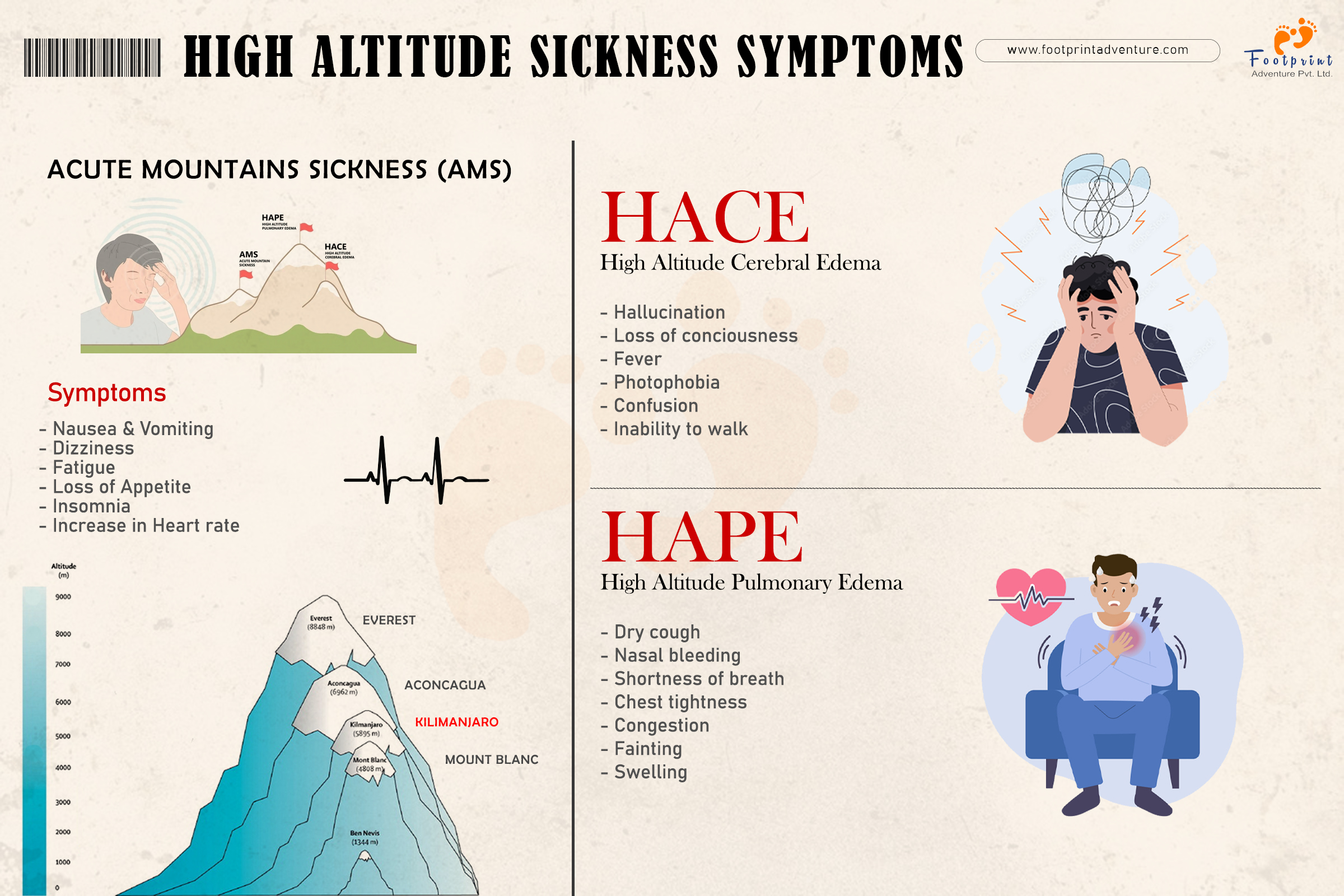
What to pack during the Kilimanjaro Climb?
Since the Kilimanjaro climb involves challenging terrain and altitude changes, it's crucial to pack wisely to ensure comfort and safety. While not as extreme as some other high-altitude treks, like Everest Base Camp or Annapurna Circuit, it still requires careful consideration of your gear, especially if you're trekking independently or without a porter.
Given that you'll be spending nights in designated campsites along the route, you won't need to carry as much gear as you would for a camping trek. Here's a simplified packing guide tailored for Kilimanjaro:
Clothing:
- Base layers: Two sets of moisture-wicking tops and bottoms for layering.
- Insulating layers: Fleece jacket or down jacket for warmth during chilly nights.
- Outer layers: Waterproof and windproof jacket and pants to shield against rain and wind.
- Hiking pants and shorts for daytime trekking.
- Warm hat, gloves, and a scarf or neck gaiter for cold temperatures.
- Sturdy hiking boots with good ankle support.
- Socks: Bring extra pairs of moisture-wicking hiking socks.
- Gaiters: Essential for keeping snow and debris out of your boots.
Gear:
- Backpack: Opt for a 40-50 liter pack to carry your essentials.
- Sleeping bag: Choose one rated for cold temperatures, as nights can get chilly.
- Sleeping Bag or inflatable mattress for insulation and comfort.
- Trekking poles: Provides stability and support, especially on steep sections.
- Headlamp or flashlight with spare batteries.
- UV protection Sunglasses to shield your eyes from the sun's glare.
- Wide-brimmed hat or cap to protect against sun exposure.
- Water bottles or hydration systems with a capacity of at least 3 liters.
- Snacks and energy bars for on-the-go nourishment.
- Personal toiletries and any necessary medication.
- Sunscreen and lip balm with SPF to protect your skin.
- Insect repellent to ward off pesky bugs.
Miscellaneous:
- Personal identification and travel documents.
- Cash for tips, souvenirs, and emergencies.
- Map or guidebook for navigation.
- Portable charger or solar charger for electronic devices.
- Lightweight towel for personal hygiene.
- Ziplock bags for waterproofing important items.
- Whistle and emergency blanket for safety.
- Wet wipes or hand sanitizer for cleanliness on the trail.
Keep in mind the importance of packing light and only bringing what you truly need. With proper planning and the right gear, you'll be well-prepared for your Kilimanjaro adventure!
Food options during Kilimanjaro Climbing
When climbing Kilimanjaro, we provide full board meals (Breakfast, Lunch and Dinner) for you. These are designed to be nutritious and energy-boosting to support your strenuous activity. Here are some common elements of the food experience on the mountain:
- Breakfast: Often includes porridge, toast, eggs, pancakes, sausages, and fresh fruit. Hot drinks like tea, coffee, and hot chocolate are also available.
- Lunch: Usually a packed meal if you're hiking, consisting of sandwiches, boiled eggs, chicken, fruit, and juice. If it's a rest day or a short hike, you might have a hot meal at camp, including soup, pasta, rice, and vegetables.
- Dinner: Typically a hot meal with soup to start, followed by a main course such as rice, pasta, potatoes, and a protein source like chicken, beef, or fish, accompanied by vegetables. Desserts might include fruit or a simple cake.
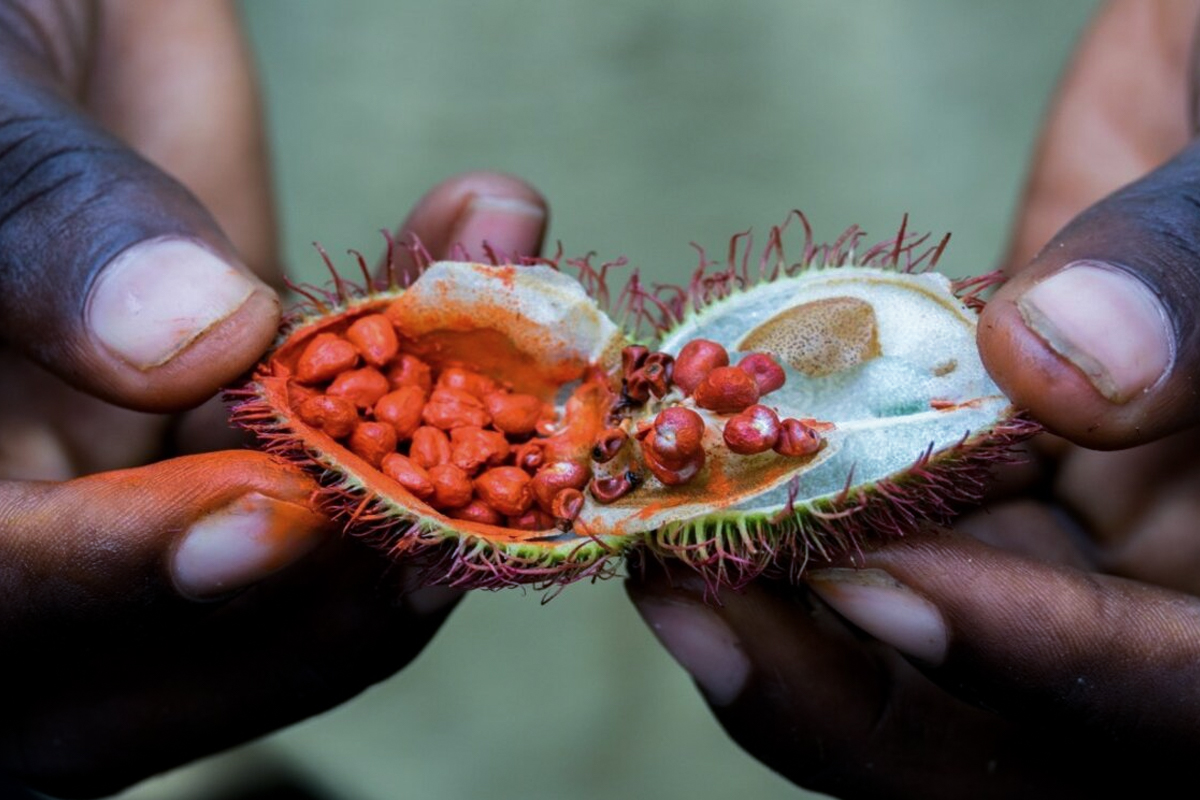
Special Food in Tanzania
Tanzanian cuisine is diverse and flavorful, reflecting the country's rich cultural heritage. Here are some popular dishes:
- Ugali: A staple made from maize flour, resembling a dense porridge, often served with meat, fish, or vegetable stews.
- Nyama Choma: Grilled meat, usually goat or beef, often served with a side of kachumbari (a fresh tomato and onion salad).
- Pilau: A spiced rice dish cooked with meat, vegetables, and various spices like cardamom, cinnamon, and cloves.
- Sukuma Wiki: Collard greens sautéed with onions, tomatoes, and spices, often served as a side dish.
- Zanzibar Dishes: Influenced by the island's history as a trade hub, including dishes like biryani, samosas, and seafood curries.
- Chapati: A type of flatbread that is often eaten with stews or used to wrap other foods.
- Mandazi: Fried doughnuts that are slightly sweet and often flavored with coconut milk or cardamom.
- Tropical Fruits: Tanzania is rich in fruits like mangoes, bananas, pineapples, and papayas, often enjoyed fresh or in juices.
Enjoying the local cuisine is a delightful part of the Tanzanian experience, whether you're savoring the hearty meals on Kilimanjaro or exploring the diverse flavors across the country.
Internet/ Electricity and Mobile Network during Kilimanjaro Climb
Internet, electricity, and mobile network coverage on Mount Kilimanjaro can be limited and unreliable, especially at higher elevations. There is generally little to no internet access available along most trekking routes. While some satellite internet can be accessed at base camps for an additional fee, the connection is often slow and may be unreliable due to weather conditions and technical constraints.
As for electricity, there are no electrical outlets for charging devices along the trekking routes on Kilimanjaro. You can also carry yourself portable solar chargers or battery packs for charging small devices.
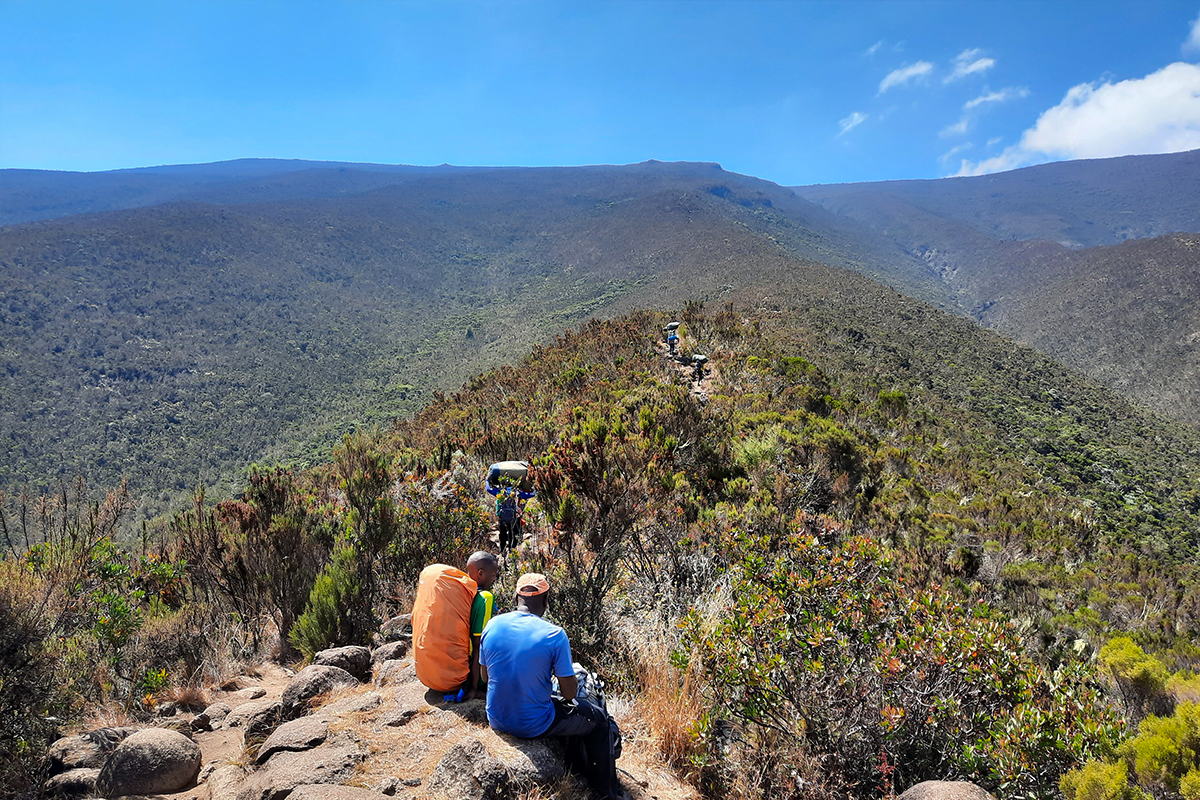
Mobile network coverage is available in certain parts of Kilimanjaro, primarily on the lower slopes and at base camps. However, coverage can be occasional and may not be available at higher elevations or in remote areas of the mountain. Different networks may have varying coverage, so it's advisable to check with your service provider about international roaming and coverage in Tanzania before embarking on your climb.
Given the limited access to the internet, electricity, and mobile networks, climbers should prepare to be disconnected during their Kilimanjaro trek. It's wise to bring extra camera batteries, a power bank, or a solar charger for electronic devices. Additionally, inform your loved ones in advance about the communication limitations during your climb to avoid concerns or misunderstandings.
Water Facilities During Kilimanjaro Climbing
Access to safe drinking water is a crucial aspect of climbing Mount Kilimanjaro. Here’s what you can typically expect:
Water Sources:
- Natural Sources: Water is collected from streams, rivers, and springs found along the route. These sources are generally clean, but it's essential to treat the water before consumption.
- Carried by Porters: Porters carry additional water supplies, especially in areas where natural sources are scarce.
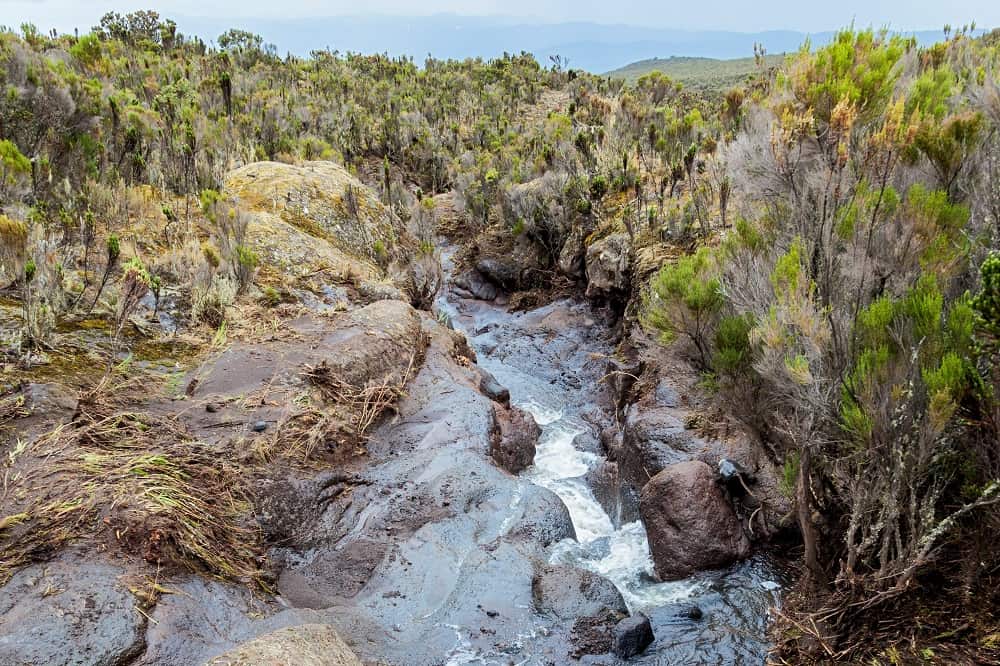
Water Treatment:
- Boiling: Water is often boiled at campsites to kill any harmful microorganisms.
- Filtration: Some trekking companies use portable water filters to purify water.
- Chemical Treatment: Iodine or chlorine tablets can be used to disinfect water. These are effective but may affect the taste.
- UV Purification: Devices like SteriPENs use UV light to purify water quickly.
Hydration Strategy:
- Daily Water Intake: Climbers are highly advised to drink 3-4 liters of water per day to stay hydrated and help acclimatize to the altitude.
- Personal Water Bottles/Hydration Packs: It's important to carry your own water bottles or hydration packs. Insulated bottles or covers can prevent water from freezing in cold temperatures.
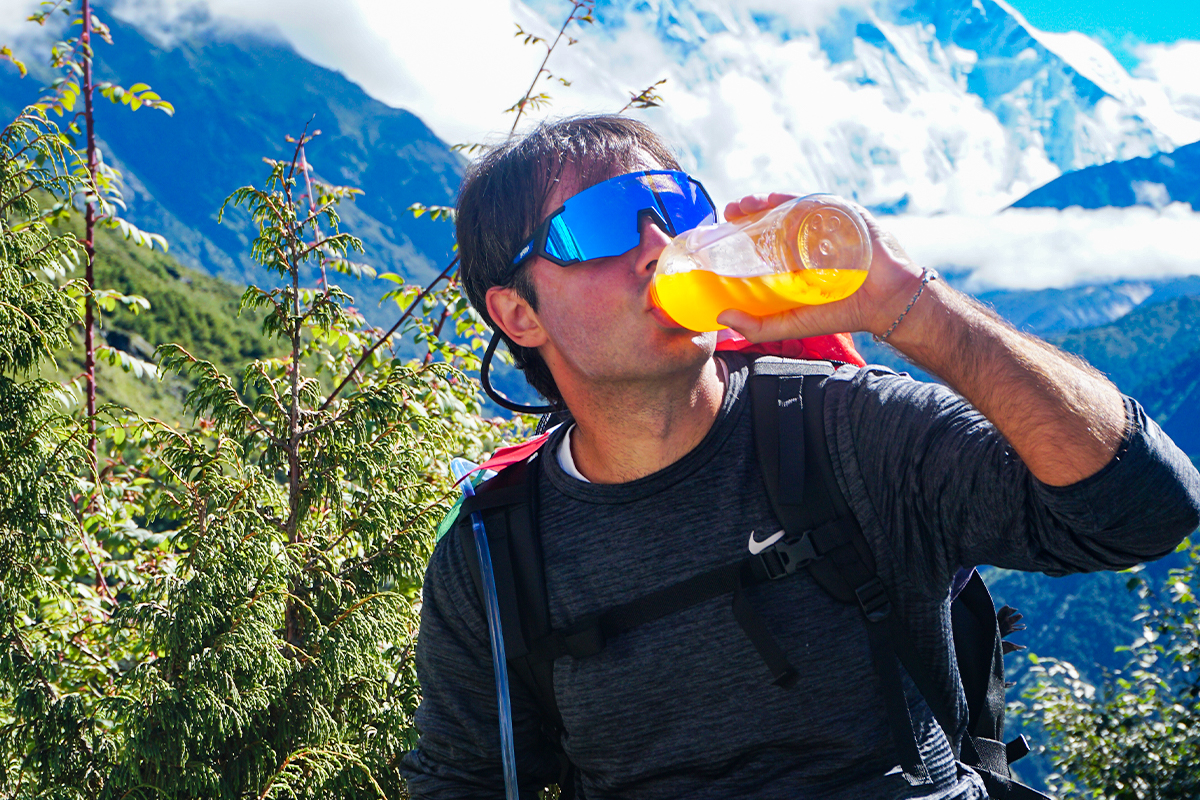
Refill Points:
- Campsites: Most campsites have designated water refill stations where you can get treated water.
- En Route: During the day’s hike, guides will indicate safe points to refill your bottles from natural sources, which then need to be treated.
Hygiene:
- Hand Washing: Use purified water for hand washing before meals to prevent gastrointestinal issues. Carry hand sanitizers as a backup.
Preparation and proper water management are vital to ensure you stay hydrated and healthy throughout your climb. Discuss the water provision and treatment methods with your trekking guide beforehand to ensure you have a reliable plan in place. Find more about Water Purification Techniques while trekking,here.
Conclusion
Climbing Mount Kilimanjaro is a remarkable adventure that combines physical challenge with breathtaking natural beauty. By understanding the unique aspects of the climb, from its diverse climatic zones to the risks of Acute Mountain Sickness (AMS), and following preventive measures, trekkers can prepare for a safe and rewarding journey. If you are considering Beginners Guide to Climbing Kilimanjaro, you can learn about it here.
Whether choosing a popular route like Machame or a more gradual path like Lemosho, proper preparation, acclimatization, and support from experienced guides are essential. With this Beginner’s Guide to Kilimanjaro Climb, the right mindset, and planning, the summit of Uhuru Peak and the memories made along the way will be an unforgettable achievement. Discover more Interesting Facts about Kilimanjaro you didn't know, here.
To get more information about Kilimanjaro Climbing in Tanzania, contact us, here.


